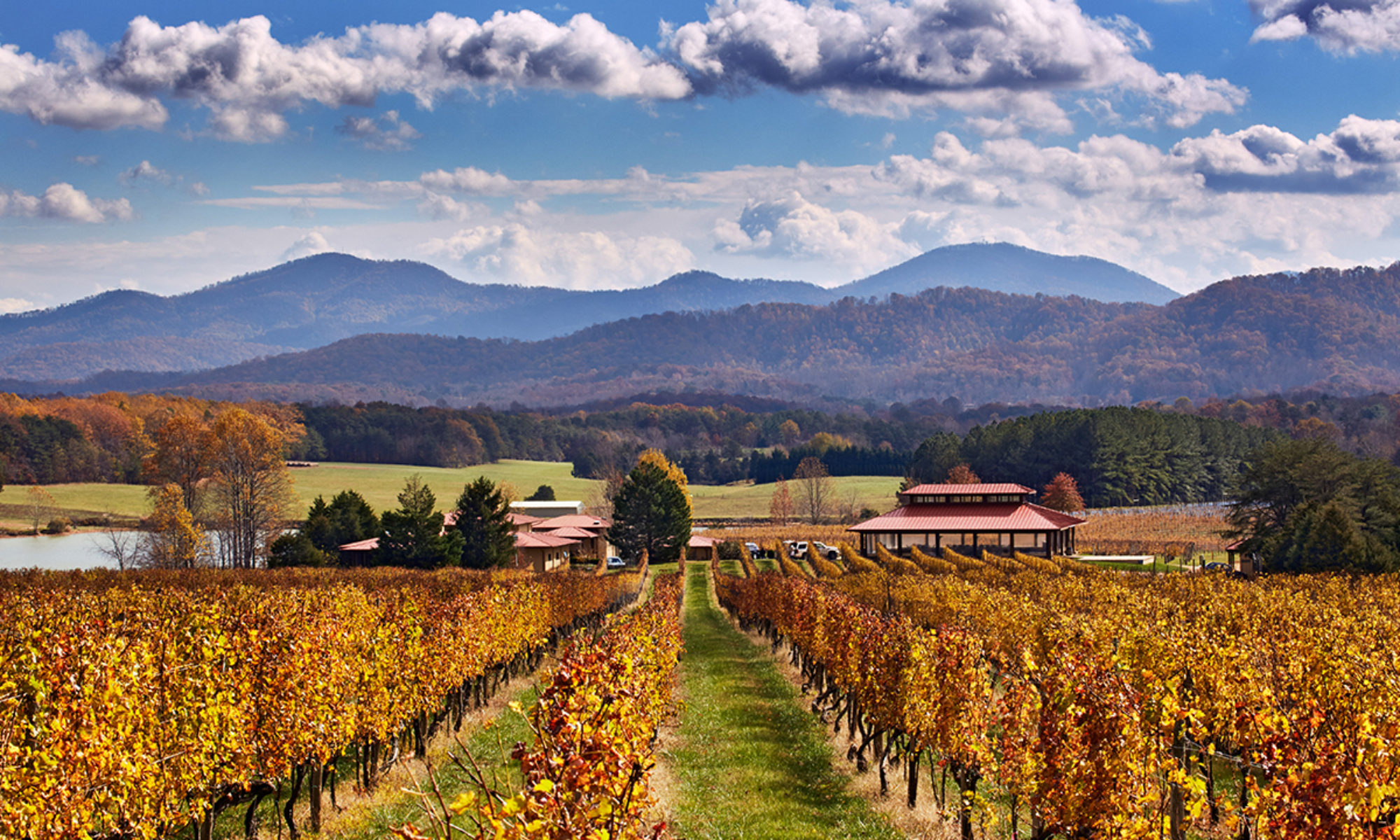Barboursville Vineyards
- A half-hour northeast of Charlottesville. Barboursville is many things at once: a family farm; a historical monument, a top-of-the-line winery, and an unusual example of foreign investment in Virginia agriculture. James Barbour was already the second generation of the family on the estate when he became Governor of the young state of Virginia, and his friend Thomas Jefferson agreed to design a new house for him. The Barbour family farmed here into the 20th century, and then in the 1970s another family took over – the Zonins, one of the largest winemarkers in Italy. The Zonins developed the winery, as one of the earliest in Virginia, and the awards have steadily flowed since.
- Wine: One of two best wineries in Virginia. Barboursville wine awards make for a very long list. Interestingly the focus of the top wines here has evolved, as it has for several producers in the state, away from a dominance of Bordeaux-style red blends — of which Barboursville’s “Octagon” was for several years at the top of the class – to more focus on single varietals. Barboursville has remained a pioneer in this approach as well, especially with white wine grapes from Italy, helping introduce first Vermentino, and most recently Fiano, to Virginia wine drinkers. Both the 2021 Fiano and the 2019 Petit Verdot were awarded gold medals at the prestigious San Francisco Chronicle nation-wide wine competition in 2023 (while the 2019 Sangiovese and Nascent (a white blend) came away with silver medals, and the 2019 Octagon settled for a bronze medal). More recently, Barboursville was awarded no fewer than ten gold medals between the 2024 and 2025 Virginia Governor’s Cup state-wide wine competition, more than any other winery. At the 2025 Governor’s Cup, their 2017 vintage Cabernet Franc, Octagon and Nebbiolo, along with their 2021 Nebbiolo and Octagon and 2023 Vermentino were all gold medal winners, and the Vermentino was judged as the #1 wine at the event. At the 2024 competition, the Barboursville 2019 Paxxito dessert wine was named one of Virginia’s twelve best wines, as part of the “Governor’s Case;” the 2019 vintage Nascent, 2020 Octagon and 2022 Vermentino were also awarded gold medals.
- Setting: Two stars. Barboursville is on the list of Virginia’s 10 Most Beautiful Wineries. The views from the balcony may not quite match some of those deeper into the Piedmont hills, but the man-made setting is hard to top. The ruins of Barbour’s Jefferson-designed home sit near the new winery, and are open to self-guided tours. You can try wines in the Tuscan Tasting Room, and on the weekend in Library 1821, alternating between wines and historic documents. There are free tours of the estate offered weekends. The estate includes an upper-end restaurant, Palladio (the Zonins hail from the Veneto, the land of Andrea Palladio). After wine tasting and dinner, you can even stay, and feel even more historic, at the 1804 Inn, partly housed in a building dating back – you guessed it – 1804.
- Stories: Two stars. 19th Century Virginia comes alive here as at few other places, such as Monticello. (1) James Barbour was not only Governor of Virginia, but he also served a decade in the US Senate, and was Secretary of War for President John Quincy Adams, from 1825 to 1828. And he was good enough friends with Thomas Jefferson to have Jefferson design his house for him. The showpiece of the mansion was the octagonal dining room, whose memory lives on in the name of Barboursville’s flagship blend, “Octagon.” The wine bottle’s label shows the dining room’s design. (2) Barbourville (the village, not the estate itself) was also the birthplace of another American President, Zachary Taylor. Taylor is not well-known abroad, but was involved in pivotal events in US history. After the annexation of Texas in 1845, he led the Army contingent sent by then-President James Polk to provoke Mexico into the what became the Mexican-American War. Known as “Old Rough and Ready,” he led his troops to several victories. As a result of that war, California and most today’s southwestern states were ceded by Mexico and became US territories, the USA had taken most of what became its permanent shape, and Taylor rode his popularity straight from the military into the White House, being elected the 12th President of the US in 1848. He died unexpectedly of a stomach ailment in 1850, less than two years into his term. (3) Aside from the political celebrities, another part of the estate’s history worth noting is its agricultural practices. In the 18th century, most Virginia estates planted what was the most lucrative market crop at the time, tobacco. Tobacco, leaving aside its problems for users and the need for low-cost labor (read slaves) to produce it on the plantations of the time, also was a crop which exhausted the soil. It was a trade-off between long-term issues and short-term monetary gains, and the short-term generally came out ahead. Future President Zachary Taylor’s father left Virginia when he was young because the soil of their land was no longer productive. The Barbour family made a different choice, managing diversified agriculture, which enabled to continue farming the same land for almost two centuries. The Zonins today take pride, as visible on the winery website, in continuing sustainable agricultural traditions here in Virginia.
